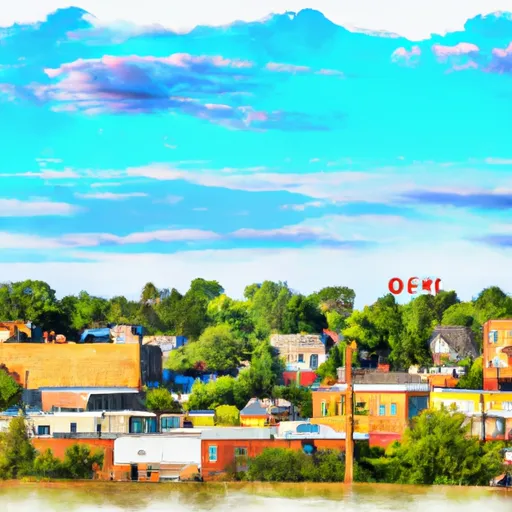-
 Snoflo Premium
Snoflo Premium
Get unlimited access to all our content
With no Ad interruptions! - Start Your Free Trial Login with existing account
Quamba
Eden Index
Climate
5.8
•
Recreation
1.7
•
Community
•
Safeguard
2.9/10

Quamba, Minnesota is a small town located in Kanabec County in the central part of the state. It experiences a continental climate, characterized by cold winters and warm summers. Winter temperatures often drop below freezing, with occasional heavy snowfall, while summer temperatures can reach the mid-80s°F (around 30°C).
The town is also surrounded by various hydrological features. The Rum River, a tributary of the Mississippi River, flows nearby, offering opportunities for fishing, boating, and canoeing. There are also several smaller lakes in the area, including Fish Lake and Grass Lake, providing additional water-based recreational activities such as swimming and kayaking.
Outdoor enthusiasts will find ample opportunities for recreation in Quamba. The area is rich in natural beauty, with numerous forests and parks offering hiking and biking trails. The nearby Mille Lacs Kathio State Park is particularly popular, featuring a diverse range of ecosystems, historical sites, and activities like camping, birdwatching, and wildlife spotting.
In conclusion, Quamba, Minnesota provides a temperate continental climate, diverse hydrological features, and abundant outdoor recreation opportunities, making it an attractive destination for nature lovers and outdoor enthusiasts.
What is the Eden Index?
The Snoflo Eden Index serves as a comprehensive rating system for regions, evaluating their desirability through a holistic assessment of climate health, outdoor recreation opportunities, and natural disaster risk, acknowledging the profound impact of these factors on livability and well-being.
Climate Health Indicator (CHI): 5.8
Quamba receives approximately
764mm of rain per year,
with humidity levels near 84%
and air temperatures averaging around
6°C.
Quamba has a plant hardyness factor of
4, meaning
plants and agriculture in this region thrive during a short period during spring and early summer. Most
plants will die off during the colder winter months.
By considering the ideal temperature range, reliable water supplies, clean air, and stable seasonal rain or snowpacks, the Climate Health Indicator (CHI) underscores the significance of a healthy climate as the foundation for quality living.
A healthy climate is paramount for ensuring a high quality of life and livability in a region, fostering both physical well-being and environmental harmony. This can be characterized by ideal temperatures, reliable access to water supplies, clean air, and consistent seasonal rain or snowpacks.
Weather Forecast
Streamflow Conditions
St. Croix
Area Rivers
St. Croix
Snowpack Depths
St. Croix
Reservoir Storage Capacity
St. Croix
Groundwater Levels
Recreational Opportunity Index (ROI): 1.7
The Recreational Opportunity Index (ROI) recognizes the value of outdoor recreational options, such as parks, hiking trails, camping sites, and fishing spots, while acknowledging that climate plays a pivotal role in ensuring the comfort and consistency of these experiences.
Access to outdoor recreational opportunities, encompassing activities such as parks, hiking, camping, and fishing, is crucial for overall well-being, and the climate plays a pivotal role in enabling and enhancing these experiences, ensuring that individuals can engage in nature-based activities comfortably and consistently.
Camping Areas
| Campground | Campsites | Reservations | Toilets | Showers | Elevation |
|---|---|---|---|---|---|
| Button Box ? George Washington State Forest | 12 | 1,400 ft | |||
| Isanti County Fairgrounds | None | 956 ft | |||
| Riverview Park - Marshalltown | None | 868 ft | |||
| Snake River City Campground | 12 | 1,257 ft | |||
| American Legion Park - Warba | None | 1,294 ft | |||
| Timmons Grove County Park | 18 | 889 ft | |||
| Woodenfrog - Kabetogama State Forest | 60 | 1,126 ft | |||
| Grammer Grove Wildlife Area | None | 930 ft | |||
| McCarthy Beach State Park | 90 | 1,393 ft | |||
| Lake Byllesby Regional Park | 60 | 868 ft |
Nearby Fishing
Nearby Ski Areas
Catastrophe Safeguard Index (CSI):
The Catastrophe Safeguard Index (CSI) recognizes that natural disaster risk, encompassing floods, fires, hurricanes, and tornadoes, can drastically affect safety and the overall appeal of an area.
The level of natural disaster risk in a region significantly affects safety and the overall livability, with climate change amplifying these risks by potentially increasing the frequency and intensity of events like floods, fires, hurricanes, and tornadoes, thereby posing substantial challenges to community resilience and well-being.
Community Resilience Indicator (CRI):
The Community Resilience Indicator (CRI) recognizes that education, healthcare, and socioeconomics are crucial to the well-being of a region. The CRI acknowledges the profound impact of these elements on residents' overall quality of life. By evaluating educational resources, healthcare accessibility, and economic inclusivity, the index captures the essential aspects that contribute to a thriving community, fostering resident satisfaction, equity, and social cohesion.

